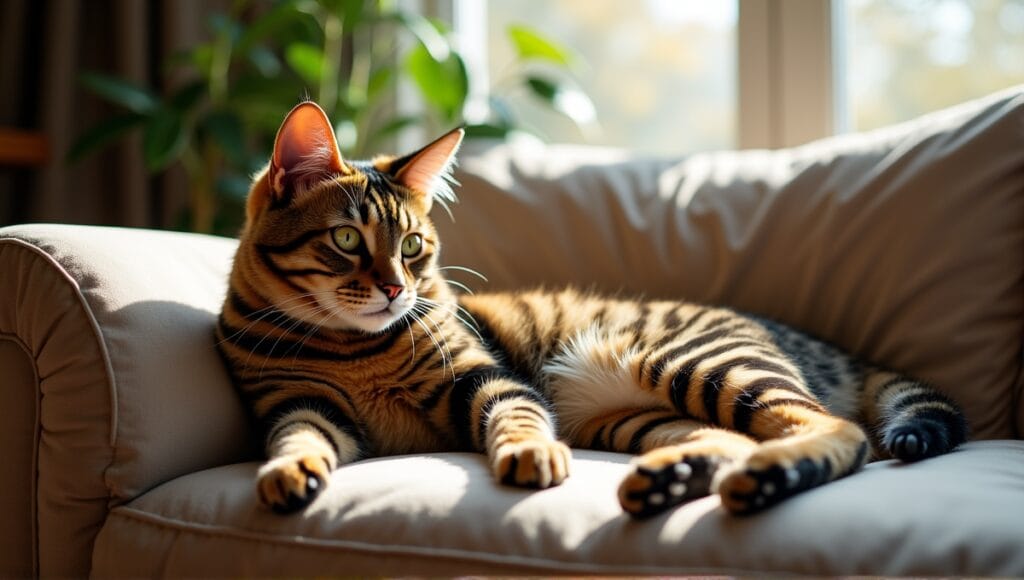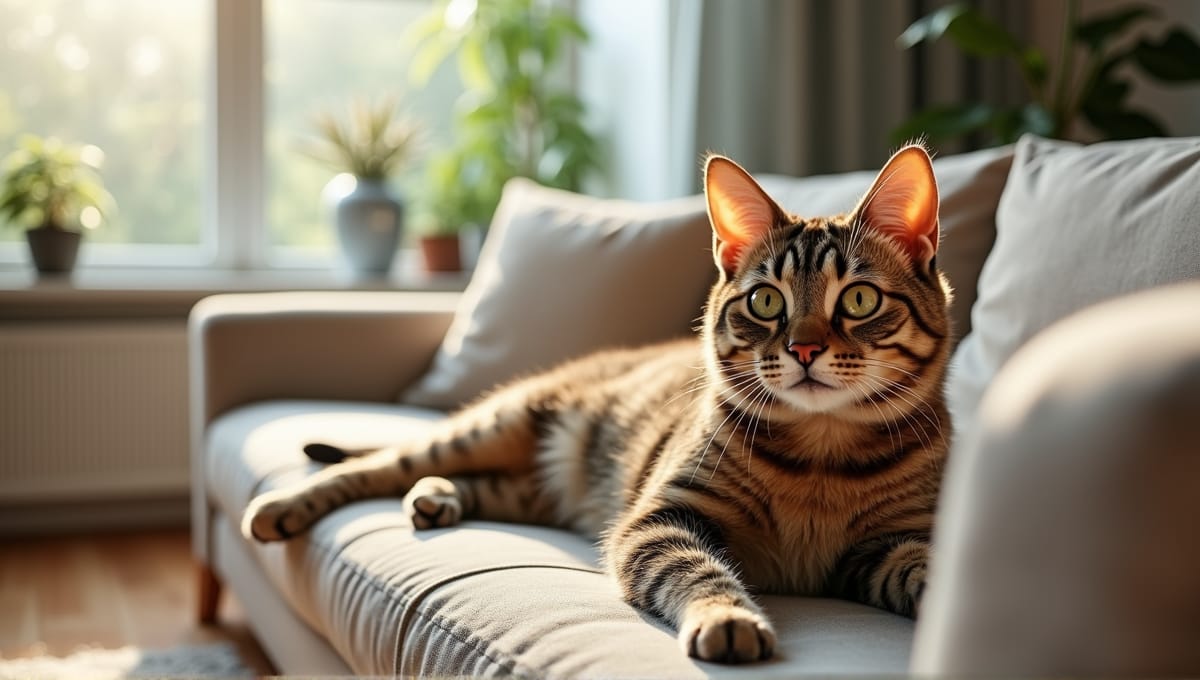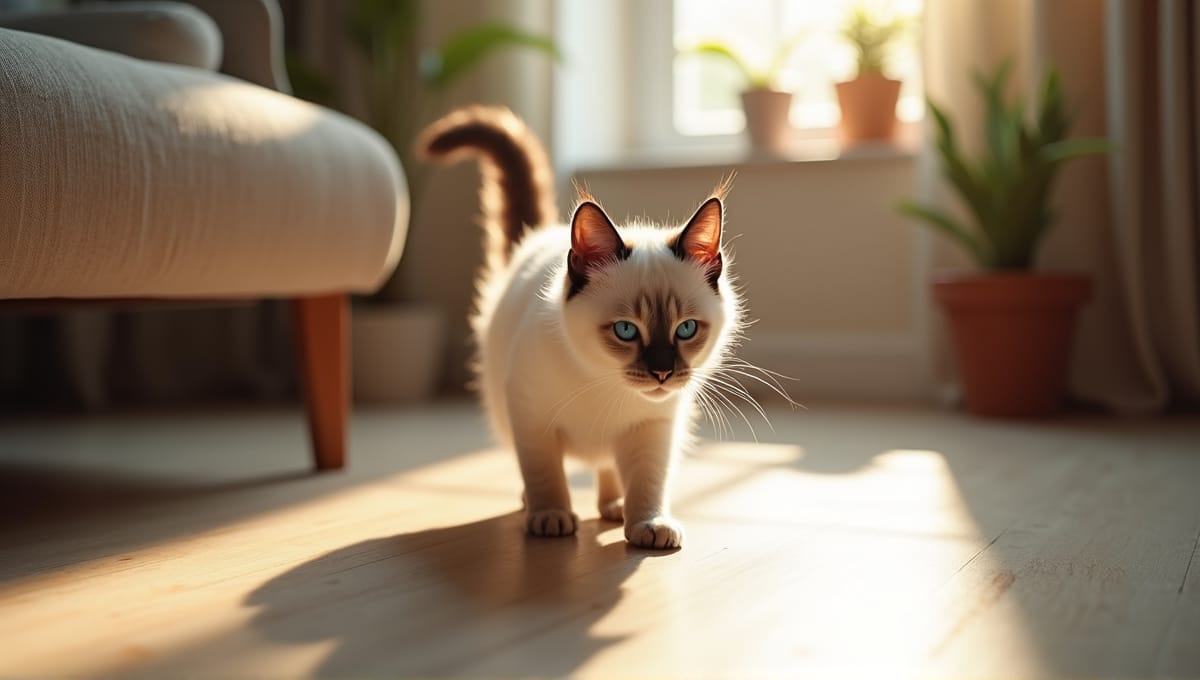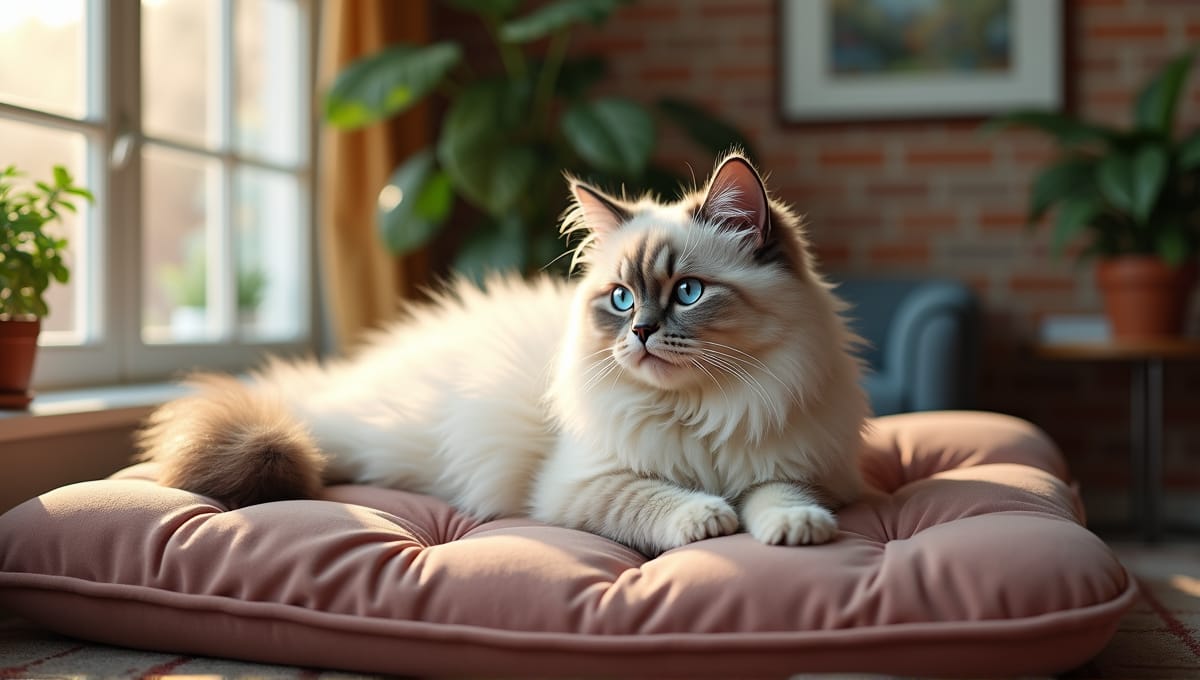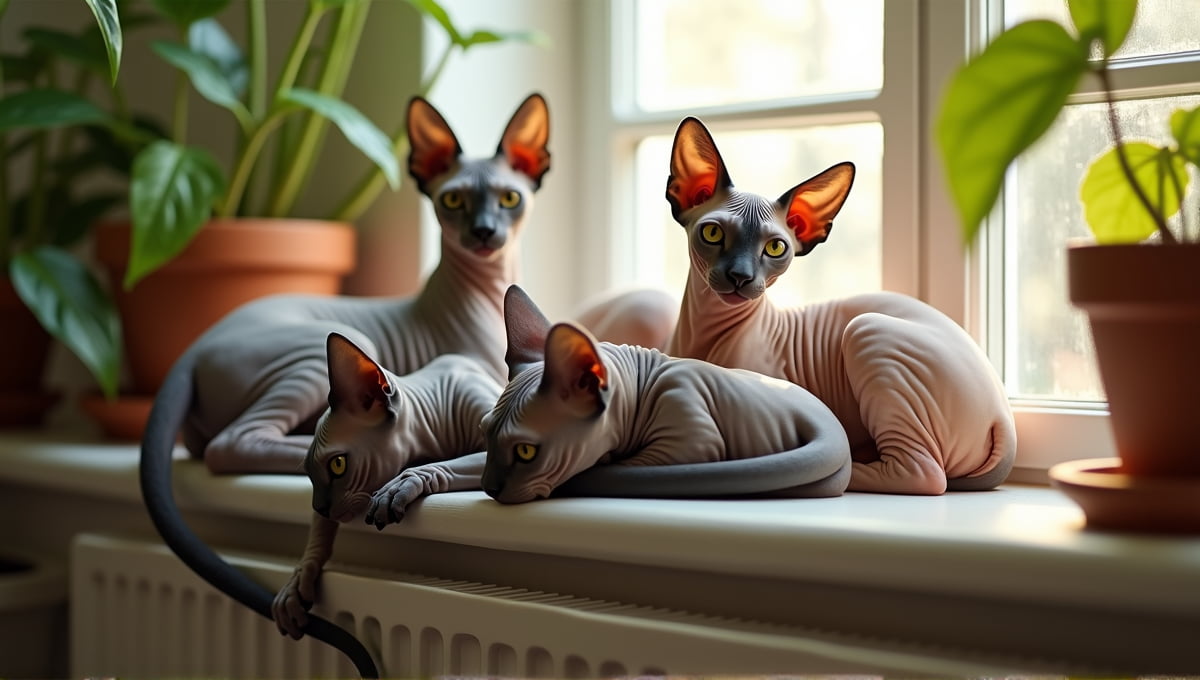Rare cat breeds are some of the most intriguing cat breeds for many cat enthusiasts. But are they the best option for your home? I’ve been a cat lover all my life and have volunteered at a shelter in the past, so I’ve personally experienced the advantages and disadvantages of rare cat breeds.
While these cats certainly have their own unique quirks and traits, they also tend to have specific care requirements and health issues. So, let’s discuss whether a rare breed cat is really the best choice for you and your family.
Exploring Unique Feline Varieties
Rare cat breeds are simply feline breeds with a small population. The breed may have a distinctive physical characteristic or genetic makeup that separates it from common house cats. I’ve researched cat breeds and their histories for years. A cat may be rare for a variety of reasons. Some breeds are naturally limited to a specific geographic location. For others, a specific genetic mutation created the breed.
The Cat Fanciers’ Association (CFA) and The International Cat Association (TICA) are the main breed recognition organizations. The CFA currently recognizes 45 pedigreed cat breeds, and TICA recognizes 73. This large discrepancy illustrates the difficulty in classifying breeds. Remember, not all rare breeds will immediately qualify for recognition with these organizations.
Maintaining genetic diversity among cats is important. This diversity ensures the overall health of the cat population. Rare breeds often carry unique genetic traits that are not found in other cat breeds. In the future, these traits may be useful for breeding programs or research.
Rare cat breeds are an excellent topic of fascination for many people. They’re not just another quirky pet. Rare cat breeds truly represent living history and genetic variance. Understanding the importance of these breeds is more than just a fun fact. It’s about understanding and appreciating the interconnected web of feline genetics and evolution. If you’re interested in learning more about unique feline varieties, you might want to explore exotic cat breeds.
Top 10 Rarest Cat Breeds in the World
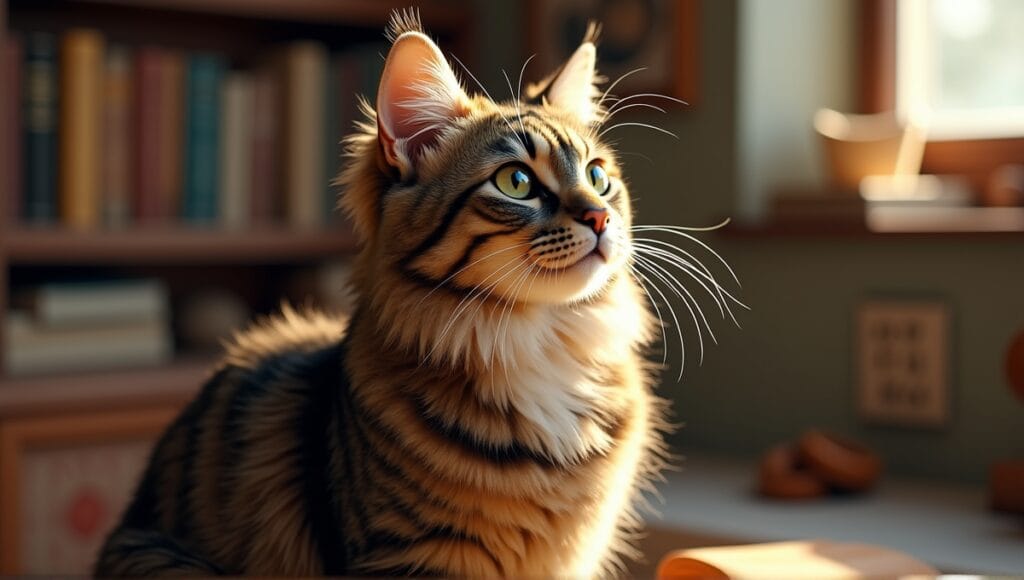
Rare cat breeds are fascinating because they are unique. Here are the 10 rarest cat breeds:
- Sokoke
- American Wirehair
- Kurilian Bobtail
- Peterbald
- LaPerm
- Burmilla
- Chartreux
- Turkish Van
- Korat
- Havana Brown
The Sokoke is the most standout rare breed. There are fewer than 100 registered cats of this breed in the world. This is primarily because the breed originates from a specific region of Kenya. There are also fewer than 100 registered American Wirehairs globally. The breed has this rarity due to its coat, which is the result of a spontaneous mutation.
Many of the breeds have a global population of fewer than 1,000 registered cats. For example, the Kurilian Bobtail comes from a remote chain of Russian islands, so they are rare due to their limited population. The Peterbald cat is a newer breed artificially created through selective breeding. It became popular because a small subset of people really likes hairless cats.
The rarity of a cat breed often comes down to a limited geographical location, a specialized breeding program, or a specific genetic mutation. All of these factors add up to a truly exceptional breed. Each one has a unique story about how it evolved as a breed and how humans selectively bred it.
Distinctive Features of Uncommon Feline Varieties
Uncommon cat breeds frequently exhibit exceptional physical characteristics. Their coats can be anything from entirely hairless to tightly curled. Their eye colors range from bright blues and deep coppers to odd-eyed combinations. Some breeds have peculiar body shapes like the short-legged Munchkin and the large-eared Highlander.
Many of these peculiar traits are the result of genetic mutations. The Peterbald, for instance, carries a dominant hairlessness gene. As a result, some cats have no hair, while others have a little bit. American Wirehairs have a dominant genetic mutation that creates a wiry coat unlike any other breed.
I’ve seen some of these unique coat types when working in the specialty pet store. Customers often comment on the soft rex coat of the LaPerm or the folded ears of the Scottish Fold. These traits are more than just fun facts – they can impact how you care for the cat and sometimes its health.
In many cases, these distinctive physical traits have become the breed’s claim to fame. The hairless skin of a Sphynx and the curled ears of an American Curl are defining breed traits. This is what makes uncommon breeds a staple in the cat world. If you’re particularly interested in cats with unique coats, you might want to explore long-haired cat breeds as well.
Origins and History of Rare Cat Breeds
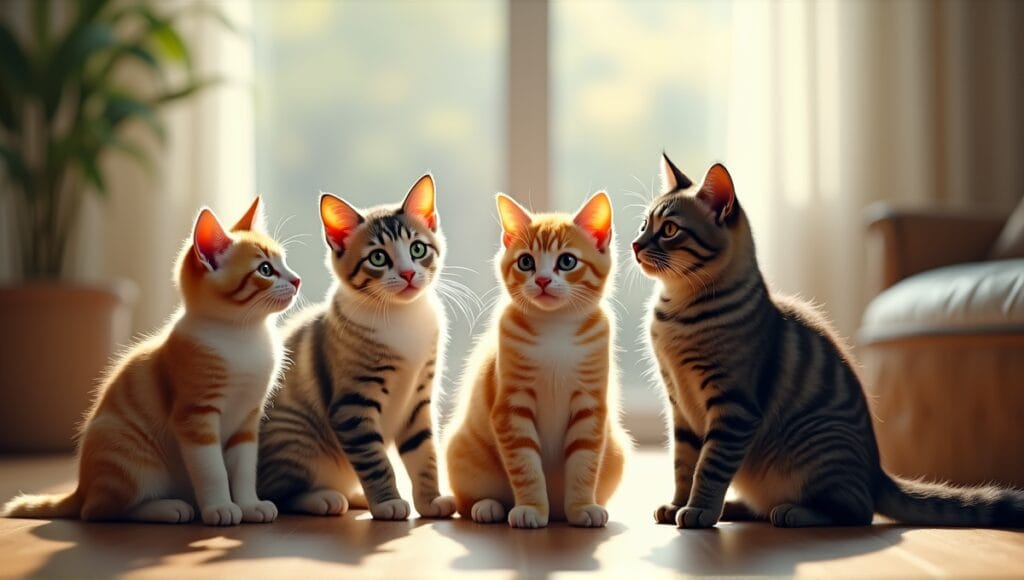
Rare cat breeds occur either naturally through evolution or as a result of human intervention. Some breeds, like the Kurilian Bobtail, developed naturally on the Kuril Islands of Russia. The bobtail is a unique mutation that likely evolved due to genetic isolation on the islands. Other breeds, like the Peterbald, were intentionally created through breeding programs.
Many breeds also have historical significance related to wars, natural disasters, or human migration. For example, the Turkish Van breed nearly went extinct during World War I. It was later rediscovered and exported to other countries in the 1950s.
Some breeds have interesting origin stories. The LaPerm breed was established in 1982 from a single cat with a curly coat that was born on a farm in Oregon. The Burmilla breed accidentally emerged in 1981 when a Chinchilla Persian crossed with a Burmese cat.
These stories illustrate the fascinating unpredictability of cat genetics and the human curiosity and effort to preserve unique traits. Each rare cat breed is a testament to the ongoing story of the domestication and development of cats. For those interested in the broader spectrum of feline varieties, mixed breed cats also have fascinating histories and characteristics.
Unique Feline Dispositions: Exploring Uncommon Breeds’ Characteristics
Many rare cat breeds have special personality characteristics. For example, the Sokoke is a rare breed known for its high energy and intelligence. Meanwhile, the Chartreux is a rare breed known for being calm and gentle. However, these general breed characteristics can vary significantly within a breed.
Rare breeds also differ in sociability. For example, the Turkish Van is a rare breed that typically forms a strong bond with just one or two people. On the other hand, the Burmilla is a rare breed known for being friendly with everyone. Some breeds are more adaptable than others. Some rare breeds are more adaptable and will be comfortable in any setting, while others might require some patience.
Family friendliness is an important consideration for many people looking for a pet. Most rare breeds can be a good family pet with proper socialization. For instance, the Korat cat is a rare breed that is excellent with children. Some breeds are more adaptable than others. Some are more adaptable to family life, even if not specifically labeled as good for children. Others might be better suited for an adults-only home.
Each rare breed also has its own unique quirks that make it fun and interesting to own. For example, the Peterbald is a rare breed that likes to use its paws like hands to investigate objects. Some rare breeds have unique quirks. Some rare breeds have special quirks that make them a particularly fun and interesting pet. For example, the Kurilian Bobtail is a rare breed known for its loyalty and playfulness, much like a dog.
Care Requirements for Rare Cat Breeds
Caring for a rare cat breed often comes with unique care requirements. Here’s what to consider:
- Grooming: Varies significantly by breed
- Diet: May have specific dietary needs
- Exercise: Requires mental and physical stimulation
- Health monitoring: Needs regular vet checkups
Grooming needs vary by the breed’s coat. Hairless cat breeds like the Peterbald require regular baths, while long-haired breeds like the Turkish Van may need daily brushing. However, some rare cat breeds require little to no grooming.
Diet considerations are another factor when caring for rare breeds. Some breeds have specific nutritional needs. High-energy breeds may need more protein, while sedentary breeds might need portion control.
Exercise and environmental stimulation is also important. Many rare cat breeds are highly intelligent and need to stay active. Investing in puzzle toys, interactive playtime, and tall climbing structures can provide the stimulation they need.
Regular vet checkups are a must for these rare cat breeds. This allows you to catch any health issues as early as possible. Some breeds may also have specific health conditions to watch for and should be screened for regularly by a vet.
Health Considerations in Rare Cat Breeds
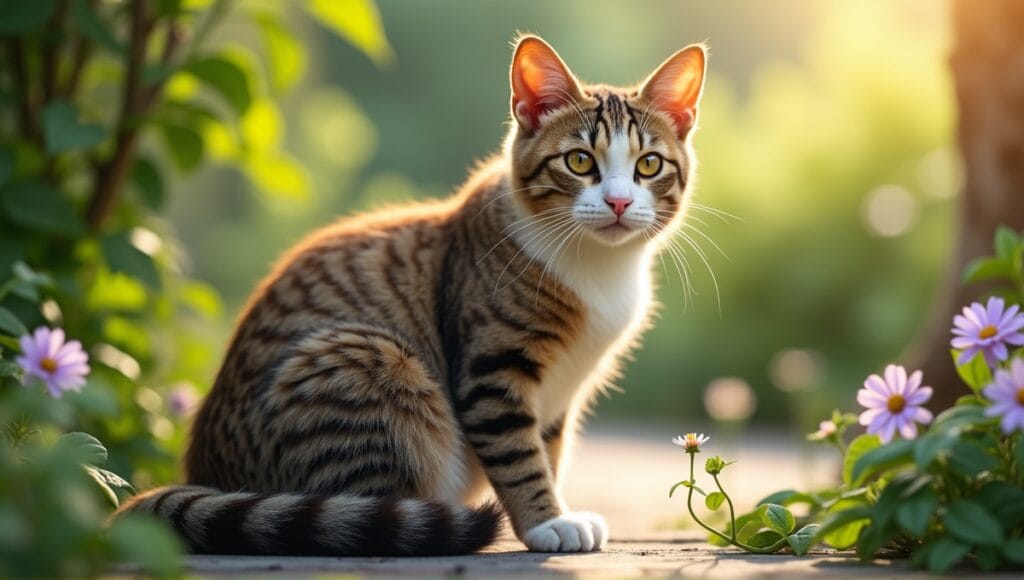
Rare cat breeds often have unique health problems. The most pressing concern is genetic health problems. Due to small breeding populations, many of these breeds suffer from genetic health issues.
Breed-specific health problems are incredibly varied. For example, Sphynx cats are predisposed to heart problems. Scottish Fold cats may have issues with their joints due to the gene that causes their folded ears. Understanding these risks is important if you’re researching a breed (or already own one).
The health of rare breed cats depends heavily on responsible breeding practices. Truly ethical breeders prioritize maintaining genetic diversity within the breed and perform health tests on the breeding cats to reduce the likelihood that your cat will have inherited health problems.
The specific health tests will vary by breed. Some cat breeds may need a heart check in the breeders’ parents every year. Others breeds might have a genetic test a parent cat has had done on their blood. As a cat lover, I always recommend doing plenty of research on the breed-specific health problems a breed will likely have.
Rare breed cats will do best if you also take them to the vet regularly. Regular checkups will help monitor for any breed-specific issues. If caught early, many of these health issues can be managed effectively with lifestyle changes or medications. Keep in mind that you may have slightly higher vet bills if you choose a rare breed cat. For those concerned about health issues in specific breeds, it’s worth noting that hypoallergenic cats can be a good option for people with allergies.
Availability and Adoption of Rare Cat Breeds
Rare cat breeds are difficult to find. They often have small populations, so there are limited breeders producing kittens. As a result, interested owners may encounter long waitlists. Some breeds may only exist in certain geographic locations.
Reputable breeders are the best place to find rare breeds. These breeders prioritize breeding to the breed standard and health. There may also be breed-specific rescue organizations for some of the rare breeds. Adopting from these organizations is a wonderful option.
Prices of rare breeds range significantly. Some may sell for several thousand dollars. Price is impacted by breed rarity, the cat’s pedigree, and the reputation of the breeder. If you have your heart set on a rare breed, prepare to make a significant investment.
Ethical considerations are important when selecting a rare breed. Supporting responsible breeding practices helps ensure these unique cats remain healthy. Additionally, adopting from a reputable breeder guarantees you’re not supporting an unethical breeder.
Owning a rare breed cat is a special responsibility. It’s more than just owning an interesting pet. You’re helping to maintain diversity in the feline species. This requires a commitment to the breed’s unique needs and ensuring the cat is happy and healthy.
Final Thoughts
Rare cat breeds offer a glimpse into the world of extraordinary felines. From the hairless Peterbald to the curly LaPerm, these cats demonstrate the incredible diversity of nature. Their rarity comes from genetic mutations, historical quirks, and deliberate breeding efforts. While they’re certainly beautiful, owning a rare breed isn’t without its challenges.
You’ll have to evaluate their specific care requirements, any health problems associated with the breed, and ethical considerations. After all, every cat is special, whether it’s a rare breed or a shelter cat, and you’re about to enjoy a wonderful journey of companionship.


